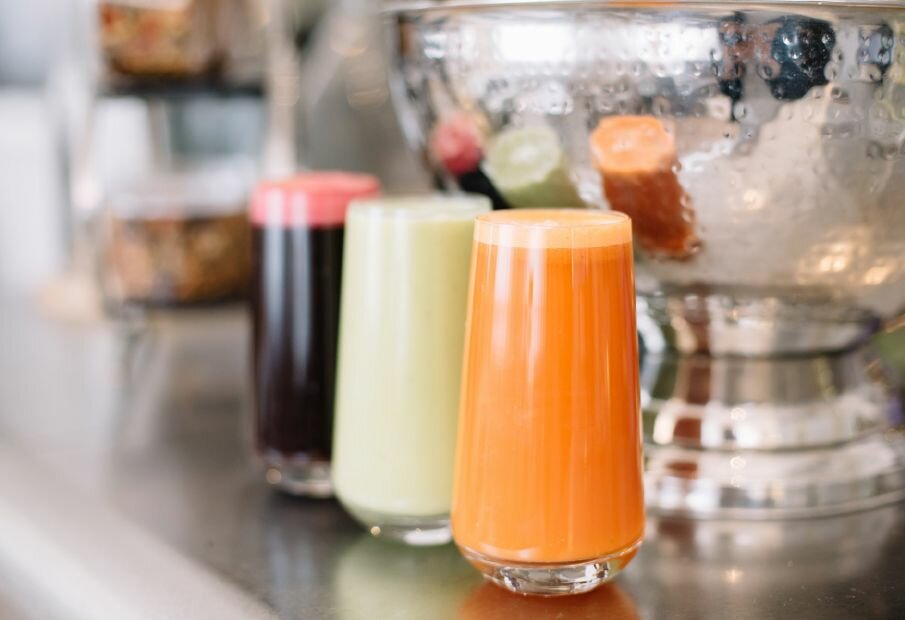Spa And Beauty Treatments Market Performance And Valuation UK
June 1, 2025

Market Performance
The Spa and Beauty Treatments market in the UK is experiencing significant growth, driven by factors such as increasing disposable incomes, a rise in wellness awareness, and the expanding popularity of non-invasive cosmetic procedures. This dynamic sector presents attractive opportunities for both established players and new entrants, making a thorough examination of its performance and valuation crucial for understanding its current trajectory and future prospects.
Growth Trends
The UK Spa and Beauty Treatments market is fueled by several key trends. Rising disposable incomes allow consumers to invest more in self-care and wellness experiences. A growing awareness of health and well-being has led to a demand for treatments that promote physical and mental relaxation, as well as aesthetic enhancements. Non-invasive cosmetic procedures, such as injectables and laser treatments, have gained widespread popularity due to their relatively quick recovery times and natural-looking results.

These trends indicate a robust market with significant growth potential. However, understanding the valuation of this sector requires analyzing factors like market size, segmentation, competitive landscape, and consumer preferences.
Key Drivers
The UK Spa and Beauty Treatments market is fueled by several key trends.
- Rising disposable incomes allow consumers to invest more in self-care and wellness experiences.
- A growing awareness of health and well-being has led to a demand for treatments that promote physical and mental relaxation, as well as aesthetic enhancements.
- Non-invasive cosmetic procedures, such as injectables and laser treatments, have gained widespread popularity due to their relatively quick recovery times and natural-looking results.
These trends indicate a robust market with significant growth potential. However, understanding the valuation of this sector requires analyzing factors like market size, segmentation, competitive landscape, and consumer preferences.
Segmentation by Treatment Type
Segmentation by treatment type is crucial for understanding the performance of the UK Spa and Beauty Treatments market. Key segments include:
- Facial treatments: This segment encompasses a wide range of services from facials, peels, to more advanced procedures like micro-needling and laser resurfacing.
- Body treatments: This segment includes massages, body wraps, scrubs, and slimming treatments.
- Hair removal: Waxing, sugaring, laser hair removal, and threading are popular choices within this segment.
- Nail care: Manicures, pedicures, and nail enhancements continue to be in high demand.
- Specialized treatments: This category includes increasingly popular non-invasive cosmetic procedures like injectables (Botox, fillers) and laser skin tightening.
Analyzing the performance of each segment allows for a deeper understanding of consumer preferences, market trends, and growth opportunities within the broader UK Spa and Beauty Treatments landscape.
Geographic Distribution of Spas and Salons
The geographic distribution of spas and salons in the UK is influenced by several factors, including population density, affluence levels, tourism, and local competition.
Major cities such as London, Manchester, Birmingham, and Edinburgh tend to have a high concentration of spas and salons due to their large populations, thriving economies, and cosmopolitan lifestyles. These urban centers often cater to diverse clientele with a wide range of treatments and services.
Resort towns and areas with significant tourism draw also see a notable presence of spas and salons. Coastal destinations, countryside retreats, and historic locations often feature establishments that offer spa packages and beauty treatments as part of the tourist experience.
While urban and resort areas dominate, smaller towns and villages across the UK also have their share of local spas and salons catering to the needs of residents.
Valuation & Market Size
The Spa and Beauty Treatments market in the UK is experiencing significant growth, driven by increasing disposable incomes, a rise in wellness awareness, and the expanding popularity of non-invasive cosmetic procedures. These trends indicate a robust market with significant growth potential. However, understanding the valuation of this sector requires analyzing factors like market size, segmentation, competitive landscape, and consumer preferences.
Current Market Value
The Spa and Beauty Treatments market in the UK is fueled by several key trends. Rising disposable incomes allow consumers to invest more in self-care and wellness experiences. A growing awareness of health and well-being has led to a demand for treatments that promote physical and mental relaxation, as well as aesthetic enhancements. Non-invasive cosmetic procedures, such as injectables and laser treatments, have gained widespread popularity due to their relatively quick recovery times and natural-looking results.
These trends indicate a robust market with significant growth potential. However, understanding the valuation of this sector requires analyzing factors like market size, segmentation, competitive landscape, and consumer preferences.
- Facial treatments: This segment encompasses a wide range of services from facials, peels, to more advanced procedures like micro-needling and laser resurfacing.
- Body treatments: This segment includes massages, body wraps, scrubs, and slimming treatments.
- Hair removal: Waxing, sugaring, laser hair removal, and threading are popular choices within this segment.
- Nail care: Manicures, pedicures, and nail enhancements continue to be in high demand.
- Specialized treatments: This category includes increasingly popular non-invasive cosmetic procedures like injectables (Botox, fillers) and laser skin tightening.
Analyzing the performance of each segment allows for a deeper understanding of consumer preferences, market trends, and growth opportunities within the broader UK Spa and Beauty Treatments landscape.
The geographic distribution of spas and salons in the UK is influenced by several factors, including population density, affluence levels, tourism, and local competition.
Major cities such as London, Manchester, Birmingham, and Edinburgh tend to have a high concentration of spas and salons due to their large populations, thriving economies, and cosmopolitan lifestyles. These urban centers often cater to diverse clientele with a wide range of treatments and services.
Resort towns and areas with significant tourism draw also see a notable presence of spas and salons. Coastal destinations, countryside retreats, and historic locations often feature establishments that offer spa packages and beauty treatments as part of the tourist experience.
While urban and resort areas dominate, smaller towns and villages across the UK also have their share of local spas and salons catering to the needs of residents.
The Spa and Beauty Treatments market in the UK is experiencing significant growth, driven by increasing disposable incomes, a rise in wellness awareness, and the expanding popularity of non-invasive cosmetic procedures. These trends indicate a robust market with significant growth potential. However, understanding the valuation of this sector requires analyzing factors like market size, segmentation, competitive landscape, and consumer preferences.
Projected Growth Rate
The UK Spa and Beauty Treatments market is fueled by several key trends. Rising disposable incomes allow consumers to invest more in self-care and wellness experiences. A growing awareness of health and well-being has led to a demand for treatments that promote physical and mental relaxation, as well as aesthetic enhancements. Non-invasive cosmetic procedures, such as injectables and laser treatments, have gained widespread popularity due to their relatively quick recovery times and natural-looking results.
These trends indicate a robust market with significant growth potential. However, understanding the valuation of this sector requires analyzing factors like market size, segmentation, competitive landscape, and consumer preferences.
- Facial treatments: This segment encompasses a wide range of services from facials, peels, to more advanced procedures like micro-needling and laser resurfacing.
- Body treatments: This segment includes massages, body wraps, scrubs, and slimming treatments.
- Hair removal: Waxing, sugaring, laser hair removal, and threading are popular choices within this segment.
- Nail care: Manicures, pedicures, and nail enhancements continue to be in high demand.
- Specialized treatments: This category includes increasingly popular non-invasive cosmetic procedures like injectables (Botox, fillers) and laser skin tightening.
Analyzing the performance of each segment allows for a deeper understanding of consumer preferences, market trends, and growth opportunities within the broader UK Spa and Beauty Treatments landscape.
The geographic distribution of spas and salons in the UK is influenced by several factors, including population density, affluence levels, tourism, and local competition.
Major cities such as London, Manchester, Birmingham, and Edinburgh tend to have a high concentration of spas and salons due to their large populations, thriving economies, and cosmopolitan lifestyles. These urban centers often cater to diverse clientele with a wide range of treatments and services.
Resort towns and areas with significant tourism draw also see a notable presence of spas and salons. Coastal destinations, countryside retreats, and historic locations often feature establishments that offer spa packages and beauty treatments as part of the tourist experience.
While urban and resort areas dominate, smaller towns and villages across the UK also have their share of local spas and salons catering to the needs of residents.
Projected growth rates for the UK Spa and Beauty Treatments market vary depending on the specific segment and factors such as economic conditions and consumer spending patterns. However, overall, the market is expected to experience continued growth in the coming years, driven by the aforementioned trends.
Factors Influencing Valuation
Valuation in the UK Spa and Beauty Treatments market is influenced by a multitude of factors. Market size, determined by the number of consumers seeking these services and the average spending per person, is a crucial starting point. Segmentation analysis, breaking down the market into facial treatments, body treatments, hair removal, nail care, and specialized procedures, provides insights into which segments are performing strongest and hold the most potential.
Understanding the competitive landscape is essential. The presence of large chains, independent salons, and niche providers influences pricing strategies and market share. Consumer preferences, shifting towards wellness, natural ingredients, and personalized experiences, also play a role in determining value.
Financial performance metrics like revenue growth, profitability margins, and customer acquisition costs provide quantitative data for valuation. Industry benchmarks and comparable company analyses are used to gauge the relative value of businesses within this sector.
Competitive Landscape
The UK Spa and Beauty Treatments market is a dynamic landscape characterized by both established players and emerging brands vying for consumer attention. Understanding the competitive forces at play is crucial for assessing the market’s overall health and identifying potential growth areas.
Major Players
The UK Spa and Beauty Treatments market is highly competitive, with a mix of large corporations, well-established chains, and independent salons.
Key players in this market include:
- International Chains: Companies like Nuffield Health, Virgin Active, The Body Shop, and Espa operate numerous locations across the UK, offering a wide range of services. They benefit from brand recognition, established infrastructure, and economies of scale.
- Mid-Sized Groups and Boutique Spas: These businesses often specialize in specific treatments or target niche markets, providing personalized experiences and tailored offerings.
- Independent Salons: Many independent salons cater to local communities, building loyal customer bases through personalized service and competitive pricing.
These players compete on factors such as price, location, service quality, brand reputation, and the range of treatments offered.
Market Share Analysis
The UK Spa and Beauty Treatments market is highly competitive, with a mix of large corporations, well-established chains, and independent salons.
Key players in this market include:
- International Chains: Companies like Nuffield Health, Virgin Active, The Body Shop, and Espa operate numerous locations across the UK, offering a wide range of services. They benefit from brand recognition, established infrastructure, and economies of scale.
- Mid-Sized Groups and Boutique Spas: These businesses often specialize in specific treatments or target niche markets, providing personalized experiences and tailored offerings.
- Independent Salons: Many independent salons cater to local communities, building loyal customer bases through personalized service and competitive pricing.
These players compete on factors such as price, location, service quality, brand reputation, and the range of treatments offered.
Emerging Trends in Competition
The UK Spa and Beauty Treatments market is characterized by intense competition from a diverse range of players, including international chains, well-established groups, and independent salons.
Key trends shaping this competitive landscape include:
* **Rise of Wellness Focus:** Consumers are increasingly prioritizing wellness and self-care, driving demand for holistic treatments that promote physical and mental wellbeing. This trend favors spas and salons offering a range of services beyond traditional beauty treatments, such as yoga, meditation, and aromatherapy.
* **Personalization and Customization:** Consumers seek personalized experiences tailored to their individual needs and preferences. This leads to a growing demand for bespoke treatment packages, customized skincare plans, and consultations with experts. Businesses that can offer highly personalized services are gaining an edge.
* **Technological Advancements:** Innovations in technology, such as AI-powered skin analysis tools, virtual reality relaxation experiences, and online booking platforms, are transforming the spa and beauty industry. Embracing these technologies allows businesses to enhance customer experience, streamline operations, and differentiate themselves from competitors.
* **Sustainability and Ethical Sourcing:** Growing consumer awareness of environmental and social issues is influencing choices in the beauty sector. Spas and salons using sustainable practices, ethically sourced ingredients, and promoting eco-friendly products are attracting environmentally conscious consumers.
These competitive forces are driving innovation, specialization, and a constant evolution in the UK Spa and Beauty Treatments market.
Consumer Behavior
The UK Spa and Beauty Treatments market is experiencing robust growth fueled by rising disposable incomes, a focus on wellness, and the popularity of non-invasive cosmetic procedures. This dynamic sector presents significant opportunities but understanding its valuation requires analyzing key factors such as market size, segmentation, competitive landscape, and consumer preferences.
Spending Habits

The UK Spa and Beauty Treatments market is experiencing robust growth fueled by rising disposable incomes, a focus on wellness, and the popularity of non-invasive cosmetic procedures. This dynamic sector presents significant opportunities but understanding its valuation requires analyzing key factors such as market size, segmentation, competitive landscape, and consumer preferences.
Consumer behavior in this market is driven by several trends:
* **Increased Spending on Self-Care:** Rising disposable incomes allow consumers to invest more in self-care and wellness experiences, making spa treatments a desirable luxury.
* **Wellness Awareness:** Consumers are increasingly prioritizing mental and physical wellbeing, leading to demand for treatments that promote relaxation, stress reduction, and holistic health.
* **Desire for Aesthetic Enhancement:** Non-invasive cosmetic procedures, such as injectables and laser treatments, have gained popularity due to their quick recovery times and natural-looking results. Consumers are seeking ways to enhance their appearance subtly and safely.
Understanding these consumer trends is crucial for businesses in the UK Spa and Beauty Treatments market to tailor their offerings, marketing strategies, and customer experiences effectively.
Preferences and Trends
The UK Spa and Beauty Treatments market is experiencing robust growth fueled by rising disposable incomes, a focus on wellness, and the popularity of non-invasive cosmetic procedures. This dynamic sector presents significant opportunities but understanding its valuation requires analyzing key factors such as market size, segmentation, competitive landscape, and consumer preferences.
Consumer behavior in this market is driven by several trends:
* **Increased Spending on Self-Care:** Rising disposable incomes allow consumers to invest more in self-care and wellness experiences, making spa treatments a desirable luxury.
* **Wellness Awareness:** Consumers are increasingly prioritizing mental and physical wellbeing, leading to demand for treatments that promote relaxation, stress reduction, and holistic health.
* **Desire for Aesthetic Enhancement:** Non-invasive cosmetic procedures, such as injectables and laser treatments, have gained popularity due to their quick recovery times and natural-looking results. Consumers are seeking ways to enhance their appearance subtly and safely.
Understanding these consumer trends is crucial for businesses in the UK Spa and Beauty Treatments market to tailor their offerings, marketing strategies, and customer experiences effectively.
Impact of Demographics and Lifestyle
The UK Spa and Beauty Treatments market is experiencing robust growth fueled by rising disposable incomes, a focus on wellness, and the popularity of non-invasive cosmetic procedures. This dynamic sector presents significant opportunities but understanding its valuation requires analyzing key factors such as market size, segmentation, competitive landscape, and consumer preferences.
Consumer behavior in this market is driven by several trends:
- Increased Spending on Self-Care: Rising disposable incomes allow consumers to invest more in self-care and wellness experiences, making spa treatments a desirable luxury.
- Wellness Awareness: Consumers are increasingly prioritizing mental and physical wellbeing, leading to demand for treatments that promote relaxation, stress reduction, and holistic health.
- Desire for Aesthetic Enhancement: Non-invasive cosmetic procedures, such as injectables and laser treatments, have gained popularity due to their quick recovery times and natural-looking results. Consumers are seeking ways to enhance their appearance subtly and safely.
Understanding these consumer trends is crucial for businesses in the UK Spa and Beauty Treatments market to tailor their offerings, marketing strategies, and customer experiences effectively.
Weight management and metabolic health
Carmen Alexandra
Crunchy Jewels
- Gummy Smile Treatment – Gum Contouring Near Cobham, Surrey - September 27, 2025
- Filler For Defined Jaw In Farnham, Surrey - September 24, 2025
- Forehead Frown Lines Treatment Near Ottershaw, Surrey - September 23, 2025
